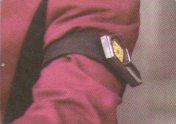There are 462 transporters on the Starbase, but of course not all are online at all times. The 140 emergency transporters are only operational during the periodic weekly diagnostics, and during Red Alerts.
Of the 122 Personnel transporters, only 50 are staffed at all times, the rest are staffed only from 0800 to 1700 hours, or in emergencies as required.
The 200 Cargo Transporters are fully staffed at all times.

Basic Operation
Current Star Fleet transporters can complete their operation within 2.5 seconds under optimal conditions, with 4 seconds being the standard. A properly maintained pattern buffer can hold signals for up to 7 minutes without significant loss of information. The transporter controls are thus designed to abort transport attempts after 5 minutes. System reset and cool down after each transport operation requires 15 to 45 seconds. Normal operating range is 60,000km, but may be raised given some conditions.
'Advanced' Operation
From there on, the rematerialization subroutines kick in, and a transporter carrier wave (the ACB) is relayed to a point on the ground where the ACB reconstructs the subject. It's important to note that the Doppler Compensators selectively control the beaming of a person to and from a starship while it's moving away from the target, or the target is moving away from it (as in the term "Doppler effect"), and basically controls how much power goes in and out of the ACB to the phase transition coils.
Errors
Translation errors usually result from sudden sub-space distortions. These errors manifest as changes in the target on a quantum level, and are usually unnoticeable. However, errors in an explosive substance could cause it to react before translation is complete.
Holding errors are rare, usually resulting from damage or improper maintenance of equipment. Safety restrictions preclude scanning or tampering with the pattern buffer. (The buffer uses an analog medium which could easily be altered by an intrusive scan). A passive sensor records the mass and rough density distribution of the transported objects, and automatically logs that information.
Reintegration errors are cause by sudden changes of the conditions along the path to the destination point. These normally cause the transport to abort and retrieve the target, but sometimes other problems may cause this to become impossible.
Pattern enhancers and armbands worn around the arm of the person to be transported help to eliminate these errors.

(Information for this page adapted from Daystrom Institute Technical Library, ST: Omnipedia multiple other areas)
BACK